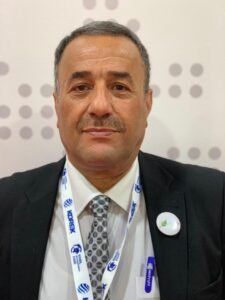Vaccination and Surveillance of Highly Pathogenic Avian Influenza in Poultry: Current Status and Prospects

Professor Dr. Salah Mahdi Hassan / Poultry Health and Production Consultant and Expert
The International Alliance for Biological Standardization (IABS), in collaboration with the World Organization for Animal Health (WOAH), held a joint meeting from October 22-23, 2024, at the WOAH headquarters in Paris, France, to examine the global status of vaccination and surveillance for Highly Pathogenic Avian Influenza (HPAI) in poultry. The detailed report was published in the journal Biologicals, published by the international publishing house Elsevier, on May 13, 2025. I would like to include a summary of the decisions taken at this important and significant meeting. This joint meeting brought together experts from around the world to discuss pressing issues surrounding HPAI in poultry.
Highly pathogenic avian influenza (HPAI), particularly the ( H5Nx 2.3.4.4b ) strain, poses a significant threat to poultry, wild birds, and even mammals worldwide. The virus’s ability to spread rapidly and cause severe economic and environmental damage makes it essential to adopt a comprehensive approach to control and prevention. Therefore, the OIE meeting aimed to address these challenges by focusing on vaccination and surveillance strategies.
The primary objective of this meeting was to review the current HPAI situation and explore future perspectives on vaccination and surveillance. The event brought together a diverse group of stakeholders, including representatives from the World Health Organization, the Food and Agriculture Organization, the World Trade Organization, governments, poultry and biological companies, animal welfare organizations, and scientists.
The main topics and discussions focused on the following:
1- Current Epidemiological Situation: The spread of highly pathogenic avian influenza varies across continents, but the virus remains entrenched in wild birds and parts of poultry populations. This session provided an overview of the current epidemiological landscape and the challenges facing different regions.
2- Vaccination Strategies: It has become clear that vaccination is a critical tool in controlling highly pathogenic avian influenza. Discussions focused on the effectiveness of current vaccines, new developments in vaccine technology, and the practicalities of implementing vaccination programs in different regions.
3- Monitoring Vaccinated Populations: One of the key challenges of vaccination is maintaining effective surveillance. This session discussed methods for monitoring vaccinated birds, detecting outbreaks early, and ensuring that vaccination does not impede disease detection. 4- Trade and Economic Impacts:
4- Commercial and economic impacts: The impact of highly pathogenic avian influenza on international trade is significant. Therefore, experts discussed how to align vaccination and surveillance with trade regulations to minimize economic disruption while ensuring biosecurity.
5- Animal Welfare and Public Health: Poultry welfare and potential risks to human health are critical considerations. This session addressed how vaccination can improve animal welfare, reduce the risk of zoonotic disease transmission, and enhance public health outcomes.
The primary objective of the meeting was to promote acceptance of vaccination as a tool to mitigate viral transmission and reduce disease incidence. The meeting also sought to evaluate current methodologies and the effectiveness of HPAI surveillance programs in vaccinated poultry flocks.
The discussions resulted in several key conclusions and recommendations that are critical to enhancing the acceptance and implementation of vaccination strategies. These included:
- Identifying RT-qPCR exclusively as a sensitive, specific, and cost-effective diagnostic tool for detecting viral presence in vaccinated flocks.
- Endorsing routine testing of dead birds within vaccinated flocks as a highly effective measure for early detection of disease outbreaks and demonstrating infection-free status in vaccinated flocks.
- Focusing on systematic data collection on field-circulating influenza virus strains to assist those responsible for selecting candidate vaccines and improving vaccine efficacy.
The current report considered the use of sentinel birds (birds within the flock that are not vaccinated) as a monitoring and evaluation tool for vaccination to be of low effectiveness, while serological testing of vaccinated birds was considered more appropriate for assessing immune status rather than determining flock infection status. There was a general consensus among meeting participants on the need to standardize surveillance results by setting internationally accepted levels or standards of trust to facilitate safe and fair trade. The report further recommended that trade policies related to vaccination and surveillance be based solely on scientific evidence and risk assessment.
In conclusion, the meeting, “Vaccination and Surveillance for Highly Pathogenic Avian Influenza in Poultry: Current Status and Prospects,” represents a crucial step toward addressing the global challenge of highly pathogenic avian influenza. By bringing together a wide range of experts and stakeholders, the event aimed to develop innovative solutions that will enhance the effectiveness of vaccination and surveillance programs. This collaborative effort is essential to protect poultry health, ensure food security, and protect public health on a global scale. We hope that Iraqi veterinary authorities will follow the decisions of this important global meeting to avert the specter of an avian influenza pandemic, which is very close to spreading if rapid medical measures are not taken, as mentioned in our previous articles on the Al-Nahrain Veterinary Network platform.
https://www.sciencedirect.com/science/article/pii/S1045105625000314?via%3Dihub



